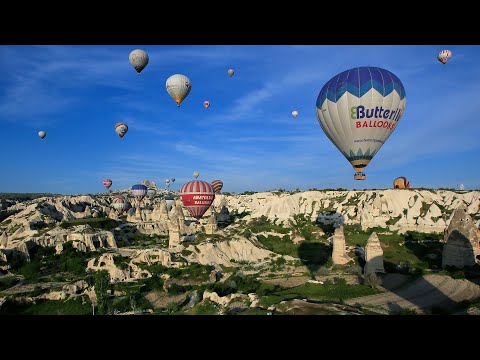
Central Turkey, an area steeped in history and culture, is often overlooked by travelers who tend to flock towards the coastal regions or the bustling streets of Istanbul. However, this region offers a unique tapestry of experiences that are pivotal to understanding the vast and diverse country of Turkey. From the lunar landscapes of Cappadocia to the ancient Hittite capitals, Central Turkey is a treasure trove for history buffs, adventure seekers, and those looking to immerse themselves in local traditions.
#### Historical Significance
The historical significance of Central Turkey cannot be overstated. This region is home to several UNESCO World Heritage Sites that highlight its importance through various eras. Among these is the Göreme National Park and the Rock Sites of Cappadocia. These ancient volcanic landscapes have been sculpted by erosion into towers, valleys, and caves which were inhabited and used as sanctuaries by early Christians. The cave churches adorned with frescoes are particularly notable for their artistic and religious significance.
Another key historical site in Central Turkey is Hattusha: the capital of the Hittite Empire in the late Bronze Age. Located near modern-day Boğazkale, Hattusha is renowned for its impressive ruins including temples, royal residences, and a fortification system that showcases advanced engineering skills of its time.
#### Cultural Richness
The cultural fabric of Central Turkey is richly woven with traditions that have been preserved over centuries. The city of Konya is one such example where ancient practices meet contemporary life. It’s most famous as the home of Rumi, a 13th-century poet and Sufi mystic whose works are celebrated globally. Konya also hosts the Mevlana Museum which was once a lodge for Whirling Dervishes. This spiritual dance known as Sema is an active form of meditation that continues to draw visitors into its mystical fold.
Local handicrafts in Central Turkey also tell stories through their patterns; Avanos pottery-making using red clay from the Kızılırmak River exemplifies this craft tradition handed down through generations.
#### Natural Wonders
Beyond history and culture, Central Turkey’s landscapes offer awe-inspiring vistas that appear almost otherworldly. Ilgaz Mountain National Park provides opportunities for hiking during summer and skiing during winter months amidst dense pine forests teeming with wildlife.
The Tuz Lake (Salt Lake) serves as another highlight in this arid region – it’s one of the largest hypersaline lakes in the world providing picturesque views especially during sunset when it reflects vibrant hues.
#### Gastronomy
Culinary explorations in Central Turkey present flavors that are both unique to this area yet reflective of broader Turkish cuisine. A special mention must be given to Testi Kebabı – slow-cooked meat with vegetables sealed inside a clay pot which encapsulates flavors while providing theatrical flair when cracked open upon serving!
#### Conclusion
Central Turkey offers more than just stepping stones into antiquity; it invites visitors on a multidimensional journey where each turn brings distinct narratives about human civilization intertwined with natural beauty. Whether exploring underground cities carved out by early Christians or witnessing dervishes’ trance-like dances rooted deeply in spirituality – traveling through Central Turkey provides insights into endurance of human spirit against backdrops that range from starkly beautiful landscapes to richly hued sunset skies.
